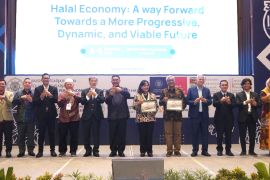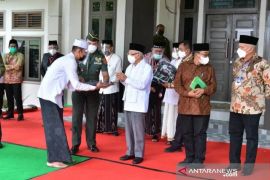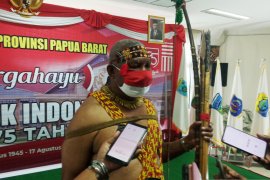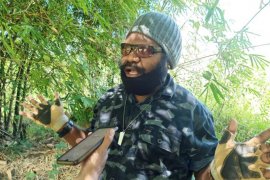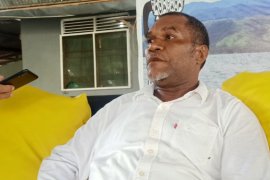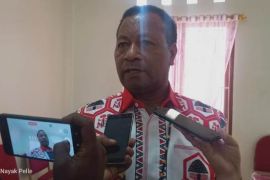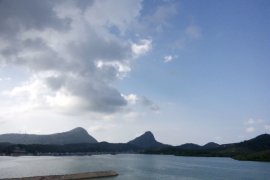One of the three regions is South Papua province.
To welcome the birth of South Papua, a 76-meter-long Indonesian national flag was displayed by the people in the yard of the Merauke district head's office on June 30.
According to the regional secretary of Merauke district, Ruslan Ramli, the flag display was the community's way to express joy over the formation of South Papua province—for which they have waited 20 years.
As stated in the bill on its establishment, the carving out of South Papua is part of the government's efforts to manage the region so that the provision of public services can be made more optimal.
It is also expected to encourage the acceleration of community welfare improvement, the strengthening of the region's competitiveness, and boost the integrity of Indonesia.
In the context of implementing regional autonomy, South Papua province will have to undertake a number of tasks, such as carrying out efforts to increase economic capacity, preparing government facilities and infrastructure, empowering and increasing human resources, and managing natural resources, in accordance with the laws.
The history of South Papua
The journey to the establishment of South Papua has been long, according to one of the community leaders in Merauke who is also the initiator of calls for the formation of the province, Johanes Gluba Gebze.
According to Gebze, the initial aspiration for the formation of South Papua province was first declared in 2002 and was raised again in 2020.
Thus, it took about 20 years to make South Papua—also known as the Anim Ha customary territory—a new province.
With God’s blessings, six major tribes have inhabited the southern part of Papua, namely the Marind, Muyu, Mandobo, Awyu, Mappi, and Asmat, Gebze said.
Long before the arrival of the Europeans in the area, it was inhabited by tribes who survived by hunting, gathering, and gardening. Then, in the 19th century, Europeans began to colonize Papua island. They divided the island in a straight line, thus, the western part became Dutch New Guinea and the eastern part became British territory.
Even so, the Marind people, who were known as head-hunters, often crossed the border, prompting the Dutch government to establish a military post on the eastern tip of South Papua in 1902.
The post, which was located near Maro River, was set up to strengthen security on the border and put an end to the hunting tradition of the Marind people. In addition, the Dutch also made it a place to spread Catholicism, a move that was also intended to stop the head-hunting tradition of the Marind people.
Gradually, the post became increasingly crowded because of its location on Maro River. The Dutch government then named the area "Merauke" and designated it as the capital of South New Guinea province. The Javanese people then began to arrive in the area and set up rice fields there.
Over time, the Dutch government learned of the existence of a larger river, namely Digul River, and moved quickly to make an expedition there. In fact, in the 1920s, the Dutch used the interior area of Papua as a detention camp, which they named “Tanah Merah.”
In other words, the Digul area was used by the Dutch to lock away some of the nation's historical figures and proclaimers, such as Sutan Sjahrir and Moh. Hatta, Gebze said.
By the time the Dutch left in the 1960s, Tanah Merah had become more and more crowded, and it eventually became the district of Boven Digoel. At this time, all of Dutch New Guinea was successfully controlled by Indonesia, and the area of South New Guinea was changed to Merauke district.
Then, in 2002, Merauke district was divided into four districts: Merauke, Boven Digoel, Mappi, and Asmat. This year, all these districts will finally be unified into the province of South Papua.
South Papua as a new province
The government has designated Merauke district as the capital of South Papua province.
According to data from the papua.go.id website, South Papua is spread over an area of 127,280 square kilometers.
Based on data provided on the website of Statistics Indonesia (BPS), Papua province, the total population of Merauke, Boven Digoel, Mappi, and Asmat districts was 517,623 in 2021.
Given their diversity, the people of South Papua will use a number of languages. Besides the Indonesian language, Asmat, Mandobo, Auyu, Wambon, Muyu, and even Javanese languages will be used in the province.
As an autonomous region, South Papua province will be authorized to manage natural resources in the sea in its area, and the procedures for drawing the boundary of its management authority will be in accordance with the provisions of the applicable laws.
Regarding its governance framework, in addition to having a governor who will lead all authorities at the provincial level and district heads and mayors for regional administration, there will also be legislative bodies that will balance the control of power in South Papua.
They will be the Legislative Council (DPR) and the Papuan People's Assembly (MRP). The DPR of South Papua will be a provincial representative institution, which will be a part of the regional administration of the province.
Meanwhile, the MRP of South Papua province will be a governmental institution representing the native culture of Papua, and it will enjoy a certain authority for protecting the basic rights of native Papuans, based on respect for customs and culture, women's empowerment, and the strengthening of religious harmony, as regulated by laws.
South Papua province will also have special autonomy, namely special authority recognized and granted by the central government to Papua province and provinces in the Papua region to regulate and manage the interests of the local community according to their own initiative and based on the aspirations and basic rights of the Papuan people, as regulated by laws.
In the near future, as stated by Coordinating Minister for Political, Legal, and Security Affairs, Mahfud MD, the government will form the administrations of the three new provinces in Papua, including South Papua, and regulate the availability of people's representatives there.
Hopefully, all the good intentions, such as the aim to advance Papua, realize equitable development, accelerate public services, improve community welfare, and uplift native Papuans' dignity, which underlie the formation of South Papua province and the other two provinces, would be achieved.
Related news: Establishment of C Papua Province hopefully boosts Papuans' prosperity
Related news: Govt to consider issuing poll rules for new provinces
Editor: Rahmad Nasution
Copyright © ANTARA 2022



